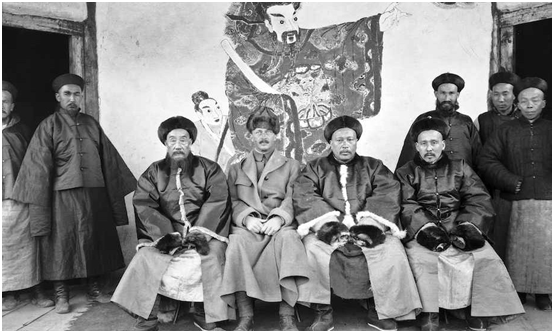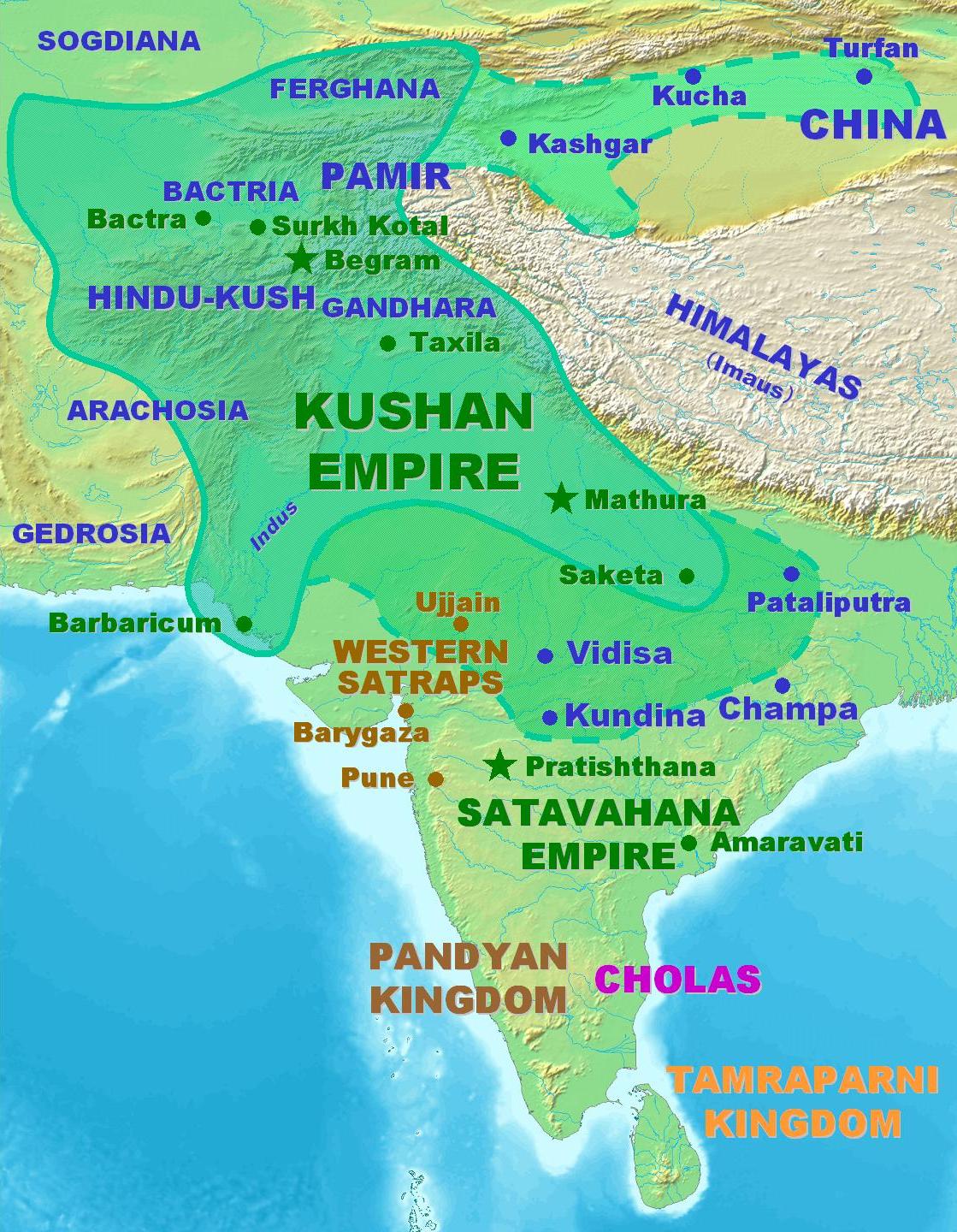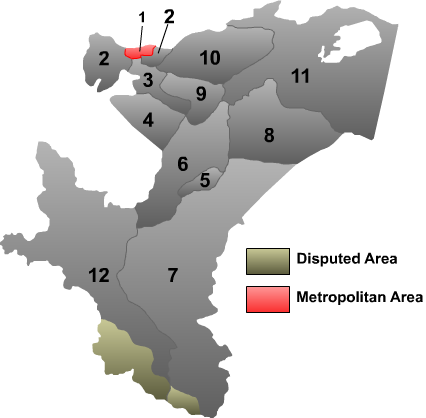|
Yarkand Khanate
The Yarkent Khanate, also known as the Yarkand Khanate and the Kashghar Khanate, was a Sunni Muslim Turkic state ruled by the Mongol descendants of Chagatai Khan. It was founded by Sultan Said Khan in 1514 as a western offshoot of Moghulistan, itself an eastern offshoot of the Chagatai Khanate. It was eventually conquered by the Dzungar Khanate in 1705. Capital Yarkent served as the capital of the Yarkent Khanate, which was also known as the Yarkent State (''Mamlakati Yarkand''), from the establishment of the Khanate (1514 AD) to its fall (1705 AD). The previous Dughlat state of Mirza Abu Bakr Dughlat (1465–1514) of Kashgaria also used Yarkent as the capital of state. History Background The Khanate was predominantly Uyghur/ Turki; some of its most populated cities were Hotan, Yarkent, Kashgar, Yangihissar, Aksu, Uchturpan, Kucha, Karashar, Turpan and Kumul. It enjoyed continued dominance in the region for about 200 years until it was conquered by the Dzungar Kh ... [...More Info...] [...Related Items...] OR: [Wikipedia] [Google] [Baidu] |
Monarchy
A monarchy is a form of government in which a person, the monarch, reigns as head of state for the rest of their life, or until abdication. The extent of the authority of the monarch may vary from restricted and largely symbolic (constitutional monarchy), to fully autocratic (absolute monarchy), and may have Political representation, representational, Executive (government), executive, legislative, and judicial functions. The Order of succession, succession of monarchs has mostly been Hereditary monarchy, hereditary, often building dynasties; however, monarchies can also be elective monarchy, elective and Self-proclaimed monarchy, self-proclaimed. Aristocracy (class), Aristocrats, though not inherent to monarchies, often function as the pool of persons from which the monarch is chosen, and to fill the constituting institutions (e.g. Diet (assembly), diet and Royal court, court), giving many monarchies oligarchic elements. The Legitimacy (political)#Monarchy, political legitim ... [...More Info...] [...Related Items...] OR: [Wikipedia] [Google] [Baidu] |
Dzungar Khanate
The Dzungar Khanate ( Mongolian: ), also known as the Zunghar Khanate or Junggar Khanate, was an Inner Asian khanate of Oirat Mongol origin. At its greatest extent, it covered an area from southern Siberia in the north to present-day Kyrgyzstan in the south, and from present-day west of Mongolia and the Great Wall of China in the east to present-day Kazakhstan in the west. The core of the Dzungar Khanate is today part of northern Xinjiang, also called Dzungaria. About 1620 the western Mongols, known as the Oirats, united in the Junggar Basin in Dzungaria. In 1678, Galdan received from the Dalai Lama the title of ''Boshogtu Khan'', making the Dzungars the leading tribe within the Oirats. The Dzungar rulers used the title of Khong Tayiji, which translates into English as "crown prince". Between 1680 and 1688, the Dzungars conquered the Tarim Basin, which is now southern Xinjiang, and defeated the Khalkha Mongols to the east. In 1696, Galdan was defeated by the Qing dy ... [...More Info...] [...Related Items...] OR: [Wikipedia] [Google] [Baidu] |
Kucha
Kucha or Kuche (also: ''Kuçar'', ''Kuchar''; , Кучар; zh, t= 龜茲, p=Qiūcí, zh, t= 庫車, p=Kùchē; ) was an ancient Buddhist kingdom located on the branch of the Silk Road that ran along the northern edge of what is now the Taklamakan Desert in the Tarim Basin and south of the Muzat River. The former area of Kucha now lies in present-day Aksu Prefecture, Xinjiang, China. Kuqa town is the county seat of Aksu Prefecture's Kuqa County. Its population was given as 74,632 in 1990. Etymology The history of toponyms for modern Kucha remains somewhat problematic; however, it is clear that Kucha (''Kuchar'', in Turkic languages) and ''Kuché'' (modern Chinese)Elias (1895): ''The Tarikh-i-Rashidi of Mirza Muhammad Haidar, Dughlát: A History of the Moghuls of Central Asia. An English Version Edited, with Commentary, Notes, and Map by N. Elias''. Translation by E. Denison Ross. London. Sampson, Low, Marston and Company Ltd.), p. 124, n. 1., ''et passim'' both co ... [...More Info...] [...Related Items...] OR: [Wikipedia] [Google] [Baidu] |
Uchturpan County
Uqturpan County, United States National Geospatial-Intelligence Agency or Uchturpan County ( transliterated from ; zh, s=乌什吐鲁番县), also Wushi County ( zh, s=乌什县), is a county in the Xinjiang Uyghur Autonomous Region under the administration of Aksu Prefecture and shares an approximately long border with Kyrgyzstan's Issyk-Kul Region. The county is bordered to the northeast by Onsu County (Wensu), to the southeast by Aksu city, to the west by Akqi County in Kizilsu Kyrgyz Autonomous Prefecture and to the south by Kalpin County (Keping). It has an area of and a population of 180,000. Name Uqturpan is also spelled Uchturpan and Uch-Turfan. History Tang During the Battle of Aksu (717), the Umayyad Caliphate and their Turgesh and Tibetan Empire allies hope to seize Uqturpan (then known as Dai-dʑiᴇk-dʑiᴇŋ) from Tang-Karluks- Exiled Western Turkic Khaganate allies but were repelled. Qing Ush Turfan was the site of a battle between Barhanuddin and ... [...More Info...] [...Related Items...] OR: [Wikipedia] [Google] [Baidu] |
Aksu, Xinjiang
Aksu (, ; zh, s=阿克苏, p=Ākèsū) is a city in and the seat of Aksu Prefecture, Xinjiang, lying at the northern edge of the Tarim Basin. The name Aksu literally means "white water" (in Turkic) and is used for both the oasis town and the Aksu River (Xinjiang), Aksu River. The economy of Aksu is mostly agricultural, with cotton, in particular long-staple cotton (''Gossypium hirsutum''), as the main product. Also produced are grain, fruits, oils and beets. The industry mostly consists of weaving, cement and chemical industries. The land currently under the administration of the Aksu City is divided in two parts, separated by the Aral, Xinjiang, Aral City. The northern part hosts the city center, while the southern part is occupied by the Taklamakan Desert. Aksu airport is considered a military airport in China (although also available for civil usage). Only aircraft registered in China can land in Aksu. This means if you are flying to Aksu from international origins you hav ... [...More Info...] [...Related Items...] OR: [Wikipedia] [Google] [Baidu] |
Yengisar County
Yengisar County, United States National Geospatial-Intelligence Agency (formerly transliterated as Yangi Hissar, from , United States National Geospatial-Intelligence Agency), also known as Yingjisha County, United States National Geospatial-Intelligence Agency ( zh, s=英吉沙县), is a county of Kashgar Prefecture in southwest Xinjiang, China. It covers an area of . As of the 2002 census, it had a population of 230,000. The county seat is the city of Yengisar, a town well known among the local Uyghurs for its handmade knives. The finely-tuned skill of knife-making used to be passed down among generations in Yengisar, but it is slowly dying due to China's strict response to deadly clashes in Xinjiang. History In 1499, Ahmad Alaq seized Kashgar and Yengisar from Mirza Abu Bakr Dughlat. In 1847 and again in 1857, Kashgar and Yengisar were captured. In 1882, Yengisar Independent Subprefecture () was created. In 1913, Yengisar Independent Subprefecture became Yengisar Count ... [...More Info...] [...Related Items...] OR: [Wikipedia] [Google] [Baidu] |
Kashgar
Kashgar () or Kashi ( zh, c=喀什) is a city in the Tarim Basin region of southern Xinjiang, China. It is one of the westernmost cities of China, located near the country's border with Kyrgyzstan and Tajikistan. For over 2,000 years, Kashgar was a strategically important oasis on the Silk Road between China, the Middle East, and Europe. It is one of the oldest continuously inhabited cities in the world and has a population of 711,300 people (). Kashgar's urban area covers , although its administrative area extends over . At the convergence point of widely varying cultures and empires, Kashgar has been under the rule of the Chinese, Turkic, Mongol and Tibetan empires. The city has also been the site of a number of battles between various groups of people on the steppes. Now administered as a county-level city, Kashgar is the administrative centre of Kashgar Prefecture, which has an area of and a population of approximately 4 million . Kashgar was declared a Special Economic ... [...More Info...] [...Related Items...] OR: [Wikipedia] [Google] [Baidu] |
Yarkand County
Yarkant County,, United States National Geospatial-Intelligence Agency also Shache County,, United States National Geospatial-Intelligence Agency also transliterated from Uyghur as Yakan County, is a county in the Xinjiang Uyghur Autonomous Region, China, located on the southern rim of the Taklamakan Desert in the Tarim Basin. It is one of 11 counties administered under Kashgar Prefecture. The county, usually referred to as Yarkand in English, was the seat of an ancient Buddhist kingdom on the southern branch of the Silk Road and the Yarkand Khanate. The county sits at an altitude of and had a population of . The fertile oasis is fed by the Yarkand River, which flows north down from the Karakorum mountains and passes through the Kunlun Mountains, known historically as the Congling mountains (lit. 'Onion Mountains' - from the abundance of wild onions found there). The oasis now covers , but was likely far more extensive before a period of desiccation affected the region ... [...More Info...] [...Related Items...] OR: [Wikipedia] [Google] [Baidu] |
Hotan
Hotan (also known by other names) is a major oasis town in southwestern Xinjiang, an autonomous region in Northwestern China. The city proper of Hotan broke off from the larger Hotan County to become an administrative area in its own right in August 1984. It is the seat of Hotan Prefecture. With a population of 408,900 (2018 census), Hotan is situated in the Tarim Basin some southwest of the regional capital, Ürümqi. It lies just north of the Kunlun Mountains, which are crossed by the Sanju, Hindutash and Ilchi passes. The town, located southeast of Yarkant County and populated almost exclusively by Uyghurs, is a minor agricultural center. An important station on the southern branch of the historic Silk Road, Hotan has always depended on two strong rivers, the Karakash River and the White Jade River, to provide the water needed to survive on the southwestern edge of the vast Taklamakan Desert. The White Jade River still provides water and irrigation for the town and o ... [...More Info...] [...Related Items...] OR: [Wikipedia] [Google] [Baidu] |
Turki
Chagatai (, ), also known as Turki, Eastern Turkic, or Chagatai Turkic (), is an extinct Turkic language that was once widely spoken across Central Asia. It remained the shared literary language in the region until the early 20th century. It was used across a wide geographic area including western or Russian Turkestan (i.e. parts of modern-day Uzbekistan, Turkmenistan, Kazakhstan, Kyrgyzstan), Eastern Turkestan (where a dialect, known as Kaşğar tılı, developed), Crimea, the Volga region (such as Tatarstan and Bashkortostan), etc. Chagatai is the ancestor of the Uzbek and Uyghur languages. Kazakh and Turkmen, which are not within the Karluk branch but are in the Kipchak and Oghuz branches of the Turkic languages respectively, were nonetheless heavily influenced by Chagatai for centuries. Ali-Shir Nava'i was the greatest representative of Chagatai literature. Chagatai literature is still studied in modern Uzbekistan, where the language is seen as the predecessor and the ... [...More Info...] [...Related Items...] OR: [Wikipedia] [Google] [Baidu] |
Uyghurs
The Uyghurs,. alternatively spelled Uighurs, Uygurs or Uigurs, are a Turkic peoples, Turkic ethnic group originating from and culturally affiliated with the general region of Central Asia and East Asia. The Uyghurs are recognized as the titular nationality of the Xinjiang Uyghur Autonomous Region in Northwest China. They are one of Ethnic minorities in China, China's 55 officially recognized ethnic minorities. The Uyghurs have traditionally inhabited a series of Oasis, oases scattered across the Taklamakan Desert within the Tarim Basin. These oases have historically existed as independent states or were controlled by many civilizations including History of China, China, the Mongol Empire, Mongols, the Tibetan Empire, Tibetans, and various Turkic polities. The Uyghurs gradually started to become Islamized in the 10th century, and most Uyghurs identified as Muslims by the 16th century. Islam has since played an important role in Uyghur culture and identity. An estimated 80% ... [...More Info...] [...Related Items...] OR: [Wikipedia] [Google] [Baidu] |
Kashgar Prefecture
Kashgar, also known as Kashi, is a prefecture located in southwestern Xinjiang, China, located in the Tarim Basin region (roughly the southern half of Xinjiang). It has an area of and 4,496,377 inhabitants at the 2020 census with a population density of 35.5 inhabitants/km2. The capital of the prefecture is the city of Kashgar which has a population 506,640. Kashgar Prefecture borders the Gorno-Badakhshan Autonomous Region of Tajikistan, Badakhshan Province of Afghanistan, Gilgit-Baltistan of Pakistan and Ladakh of India in the far south. History Kashgar, formerly referred to as Shule, served as the capital of the Shule Kingdom in the 2nd century B.C., inhabited by Indo-European tribes speaking Ancient Tocharian languages in the Tarim Basin. The earliest references to Shule emerged in the literature of the Han Dynasty. Shule served as the pivotal junction of the Silk Road in the northern Tarim Basin, facilitating access to the , Dayuan, and Kangju in Central Asia, and act ... [...More Info...] [...Related Items...] OR: [Wikipedia] [Google] [Baidu] |











